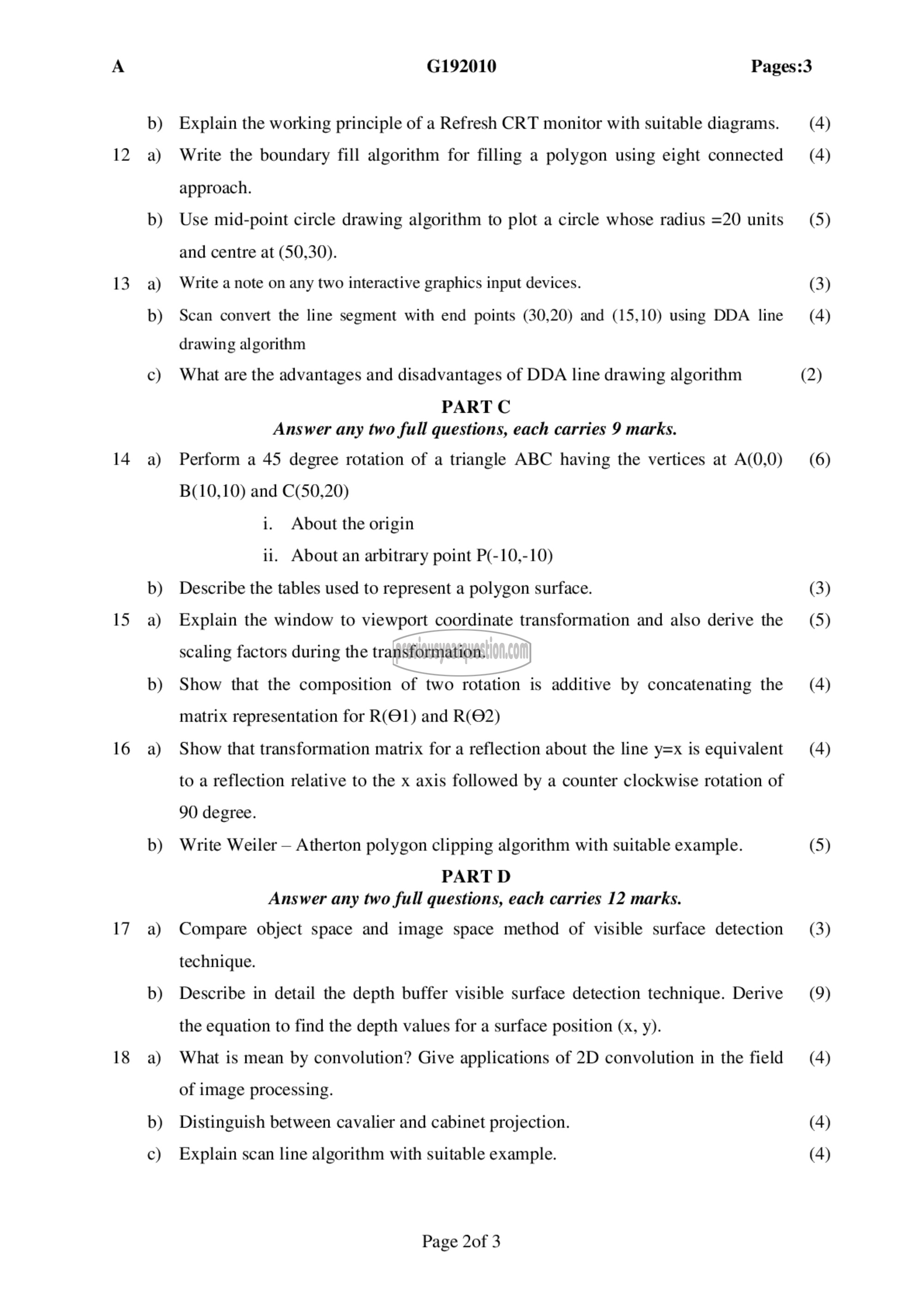APJ ABDUL KALAM TECHNOLOGICAL UNIVERSITY Previous Years Question Paper & Answer
Semester : SEMESTER 7
Subject : Computer Graphics
Year : 2019
Term : DECEMBER
Branch : COMPUTER SCIENCE AND ENGINEERING
Scheme : 2015 Full Time
Course Code : CS 401
Page:2
12
13
14
15
16
17
18
b)
a)
b)
a)
b)
0)
ಬ
0)
ಬ
0)
a)
b)
a)
b)
a)
b)
0)
(192010 Pages:3
Explain the working principle of a Refresh CRT monitor with suitable diagrams.
Write the boundary fill algorithm for filling a polygon using eight connected
approach.
Use mid-point circle drawing algorithm to plot a circle whose radius =20 units
and centre at (50,30).
Write a note on any two interactive graphics input devices.
Scan convert the line segment with end points (30,20) and (15,10) using DDA line
drawing algorithm
What are the advantages and disadvantages of DDA line drawing algorithm
PART C
Answer any two full questions, each carries 9 marks.
Perform a 45 degree rotation of a triangle ABC having the vertices at A(0,0)
B(10,10) and C(50,20)
i. About the origin
ii. About an arbitrary point P(-10,-10)
Describe the tables used to represent a polygon surface.
Explain the window to viewport coordinate transformation and also derive the
scaling factors during the transformation.
Show that the composition of two rotation is additive by concatenating the
matrix representation for R(Q1) and २(©2)
Show that transformation matrix for a reflection about the line y=x is equivalent
to a reflection relative to the x axis followed by a counter clockwise rotation of
90 degree.
Write Weiler — Atherton polygon clipping algorithm with suitable example.
PART D
Answer any two full questions, each carries 12 marks.
Compare object space and image space method of visible surface detection
technique.
Describe in detail the depth buffer visible surface detection technique. Derive
the equation to find the depth values for a surface position (x, y).
What is mean by convolution? Give applications of 2D convolution in the field
of image processing.
Distinguish between cavalier and cabinet projection.
Explain scan line algorithm with suitable example.
Page 2of 3
(4)
(4)
(5)
(3)
(4)
(2)
(6)
(3)
(5)
(4)
(4)
(5)
(3)
(9)
(4)
(4)
(4)
